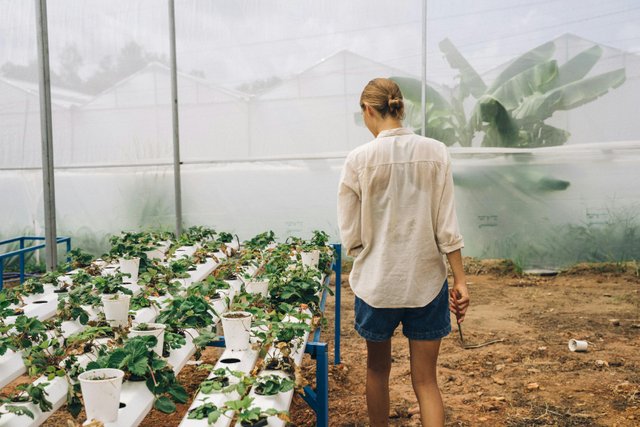Greetings my dear friends of Steemit and Steem-Agro
There are seven major different types of hydroponic systems, each with its own unique set of advantages and disadvantages.
One of the most common types of hydroponic systems is the nutrient film technique (NFT).
In an NFT system, a thin film of nutrient-rich water is circulated over the roots of the plants, which are supported by sloping troughs. The water is circulated continuously and is replenished as needed to ensure that the plants receive an optimal amount of nutrients.
The advantage of an NFT system is that it is relatively simple to set up and maintain. However, the system is highly susceptible to problems if the water film is not circulated properly, as the plants may not receive enough nutrients or may become over watered.
Another popular hydroponic system is the deep-water culture (DWC) system.
In a DWC system, the plants are suspended in a nutrient-rich water solution and an air stone is used to provide oxygen to the roots. The water is circulated continuously to ensure that the plants receive the necessary nutrients and oxygen. The advantage of a DWC system is that it can be very productive, as the plants are able to grow quickly due to the optimal conditions provided.
However, the system requires a constant power supply to run the air stone and or the pump, and if the power goes out, the plants may not receive enough oxygen and could be damaged or killed.
For a fast-maturing plant like lettuce, oxygen in the water is not as critical and many in the Philippines forego the air stone and pump to save on cost.
The aeroponics system is another type of hydroponic system that uses a nutrient-rich water solution to nourish the plants. However, instead of using an air stone to provide oxygen, the plants are suspended in the air and the water solution is misted onto the roots.
The advantage of an aeroponics system is that it can be very efficient, as the misting of the water solution allows for a high rate of nutrient absorption by the plants. However, the system can be expensive to set up and maintain, and if the water solution is not misted properly, the plants may not receive enough nutrients or may become over watered.
Vertical towers are a hybrid of the aeroponic system that solves the problem of clogged spray nozzles.
I will describe other four types of systems in the comment.
Thank you for reading my post.
I would like to invite three fellow Steemians to participate in the contest.
@sabbirakib
@edu-chemist
@chiagoziee

X Link
https://x.com/Saha_tweet/status/1919023681512038412
Downvoting a post can decrease pending rewards and make it less visible. Common reasons:
Submit
The drip system is a type of hydroponic system that uses a nutrient-rich water solution that is delivered to the plants through a series of tubes and emitters. The water is delivered to the plants in a controlled manner, ensuring that they receive the necessary nutrients and hydration.
The advantage of a drip system is that it is relatively simple to set up and maintain, and it is also very efficient in terms of water usage. However, the system can be prone to problems if the emitters become clogged or if the water pressure is not consistent, which can lead to uneven watering of the plants.
The ebb and flow system, also known as the flood and drain system, is a type of hydroponic system The ebb and flow system, also known as the flood and drain system, is a type of hydroponic system that uses a nutrient-rich water solution that is periodically flooded into the growing area and then drained back out.
The advantage of an ebb and flow system is that it is relatively simple to set up and maintain, and it is also very efficient in terms of water usage. However, the system can be prone to problems if the timing of the flooding and draining is not consistent, which can lead to uneven watering of the plants.
A hybrid that falls between the ebb and flow and drip system is the Dutch bucket system.
It is more like a drip system on timers. A good example is the MHP gardener channel.
The last type of hydroponic system is the wick system, which uses a wick to transport water and nutrients from a reservoir to the plants. This system is relatively simple and inexpensive to set up and maintain but is much less efficient and productive than some of the other hydroponic systems.
Downvoting a post can decrease pending rewards and make it less visible. Common reasons:
Submit